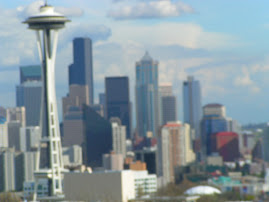I found this really cool article about cheerleading on a link from the MSN homepage, and I just have to share it!!
Credit where credit is due: By Jennie Yabroff NEWSWEEK, Mar 24, 2008 Issue. Also, here's the link where I found this: http://www.newsweek.com/id/123468?GT1=43002
"The team is in bad shape. One member has a broken rib. The other, a possible concussion from a nasty fall. A third wraps a compression bandage around a sprained ankle. They've been practicing day and night, focusing on their sport to the exclusion of most everything else, and the strain is showing. Their coach is screaming at them from the sidelines. What they could really use is a nice, peppy cheerleader to raise their spirits. The only thing is, these are the cheerleaders.
Bring it on? Modern cheerleaders do, with a vengeance. There's a lot more to cheering than short skirts and "fight, fight, fight!" says Kate Torgovnick, author of "Cheer." Torgovnick spent a year following three groups—a four-time championship team, an all-girls squad and an all-African-American team—none of which fit the stereotype of vapid blondes doing splits on the sidelines. Instead, she discovered, competitive cheerleaders are more like extreme athletes: daredevil adrenaline junkies who often perform exhausted or hurt and love their sport with an addict's devotion. And unlike more-revered athletes—such as football players or even gymnasts—cheerleaders have to contend with lack of respect from their peers and frequent mockery (think of Will Ferrell and Cheri Oteri's cheerleading skit on "Saturday Night Live"). The truth, says Torgovnick, is that cheerleading has a long, distinguished history—five American presidents did it—is a demanding sport, and deserves to be taken seriously. So make some noise!
Cheerleaders have been around since the 1890s, egging on Princeton in its first football game against Rutgers, but they looked a lot different. For one thing, they were all men. For another, they didn't do much, besides using megaphones to pump up the crowd. Over the years the guys incorporated backflips and handsprings in their routines, and, during World War II, women joined the squads. Around the same time, the president of Kilgore College caught students drinking in the parking lot during halftime, so he asked the cheer team to take the field between quarters to keep students in their seats. And thus, Torgovnick writes, modern cheerleading was born.
Today, there's a split between the stunt-heavy, gymnastic-style teams, whose routines are filled with flying bodies and physics-defying contortions, and the more traditional, pompom-shaking "spirit squads." At the University of Oregon and the University of Maryland, the competitive cheerleaders don't even cheer for the athletic teams—they save their backflips for big-time competitions such as the World Cheerleading Championships—which makes you wonder how far we are from the day when cheerleaders get their due as athletes. Torgovnick says the biggest surprise in writing her book was learning how popular the sport is with men again. After becoming female-dominated in the 1950s and 1960s, college cheerleading is now 50 percent male. "I assumed if you were a guy cheerleader you're gay," says the writer, "but it's this culture of manly men who come from football, wrestling, baseball, and get pulled into this world." If they get static about their activities, they can always point to their forefathers in cheer: before leading the country, FDR led the crowd at Harvard, and Eisenhower, sidelined from football by a knee injury, wielded the megaphone at West Point. Ronald Reagan played football as the Gipper on film, but in real life he rooted on the basketball team at Eureka College as a cheerleader. And both Bushes had that rah-rah spirit at Yale; George W. cheered for Andover as well.
Though the sport continues to evolve, most people's perception of it remains rooted in 1950s stereotypes, says Torgovnick. "The image of the cheerleader straddles the virgin/whore line," she says. "She's either the straight A's prom queen, or the short skirt, slutty, queen-bee kind of girl." This misconception is perpetuated by stories about cheerleaders run amok, such as the self-proclaimed "fab five" high-school cheerleaders in Texas who harassed their teachers and posted dirty photos of themselves on the Internet, or the Carolina Panthers cheerleaders who were arrested after a bar fight. "Cheerleaders have such a wholesome, all-American, uncorruptible image, the idea of them being corrupted really appeals to people," Torgovnick says. But she admits that there is something about the sport that attracts drama queens: "To be a cheerleader you have to want to be the center of attention," she says. "The women do like wearing that uniform." And the men like it, too."
Thursday, March 20, 2008
Subscribe to:
Post Comments (Atom)
.jpg)



No comments:
Post a Comment